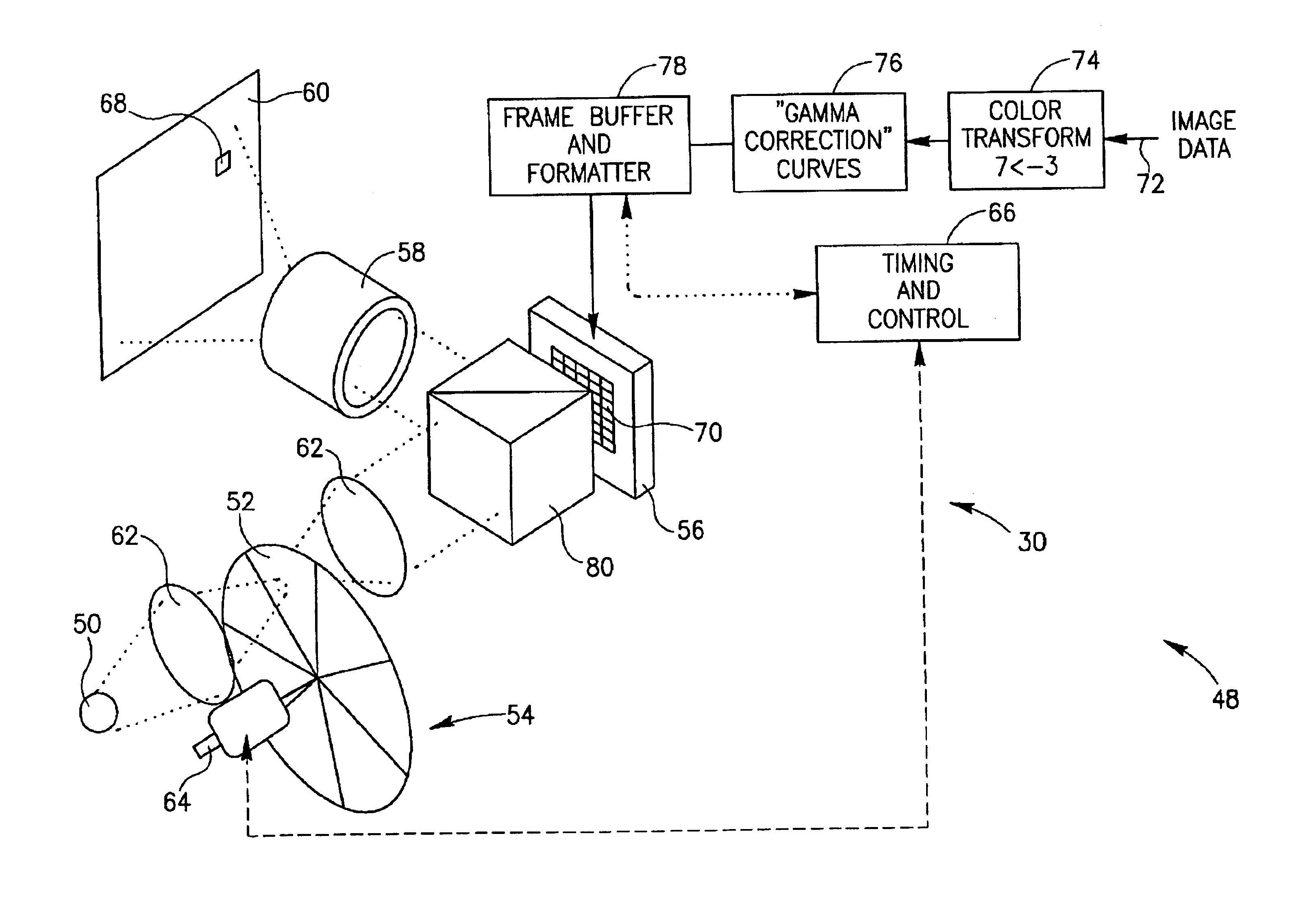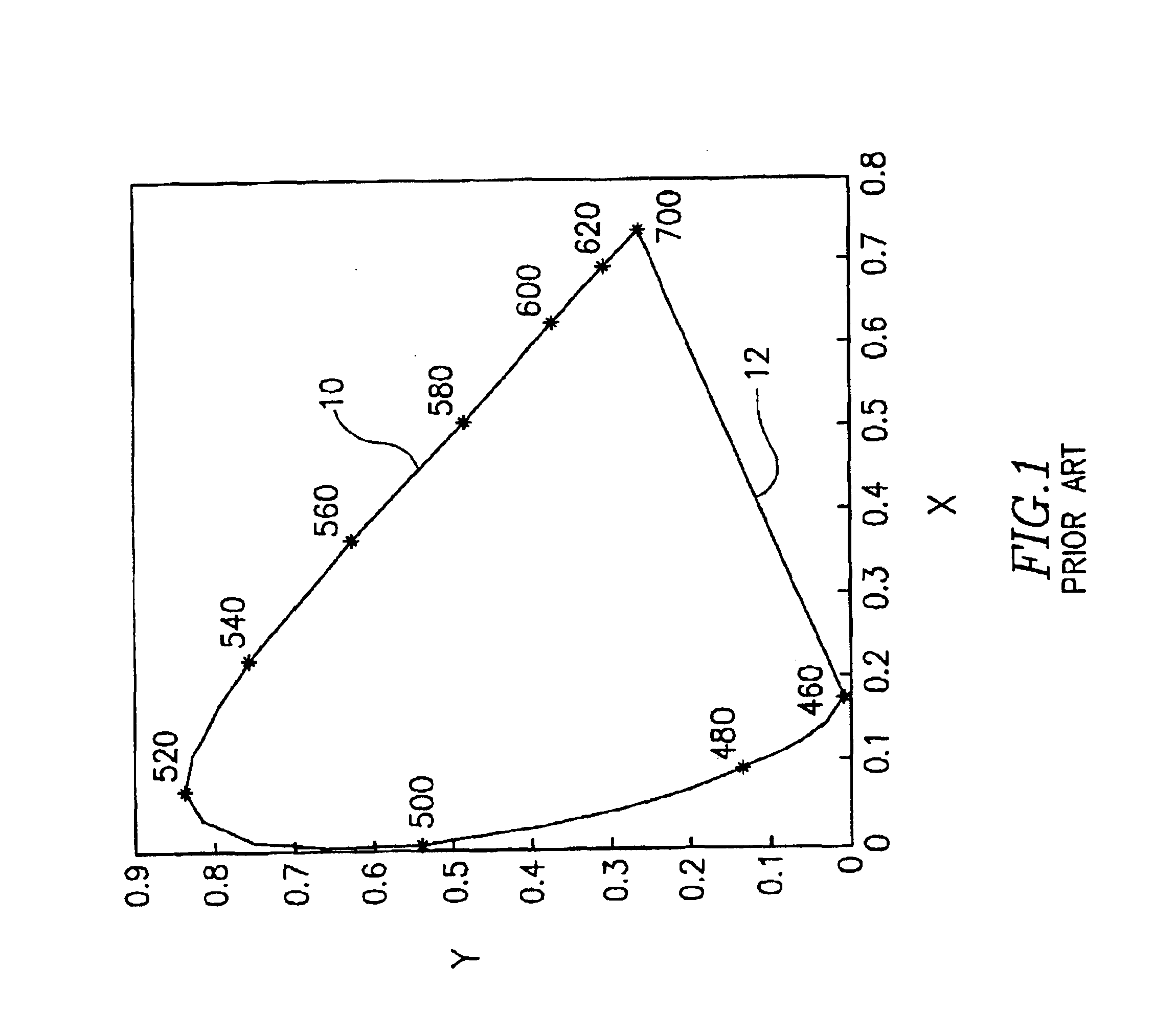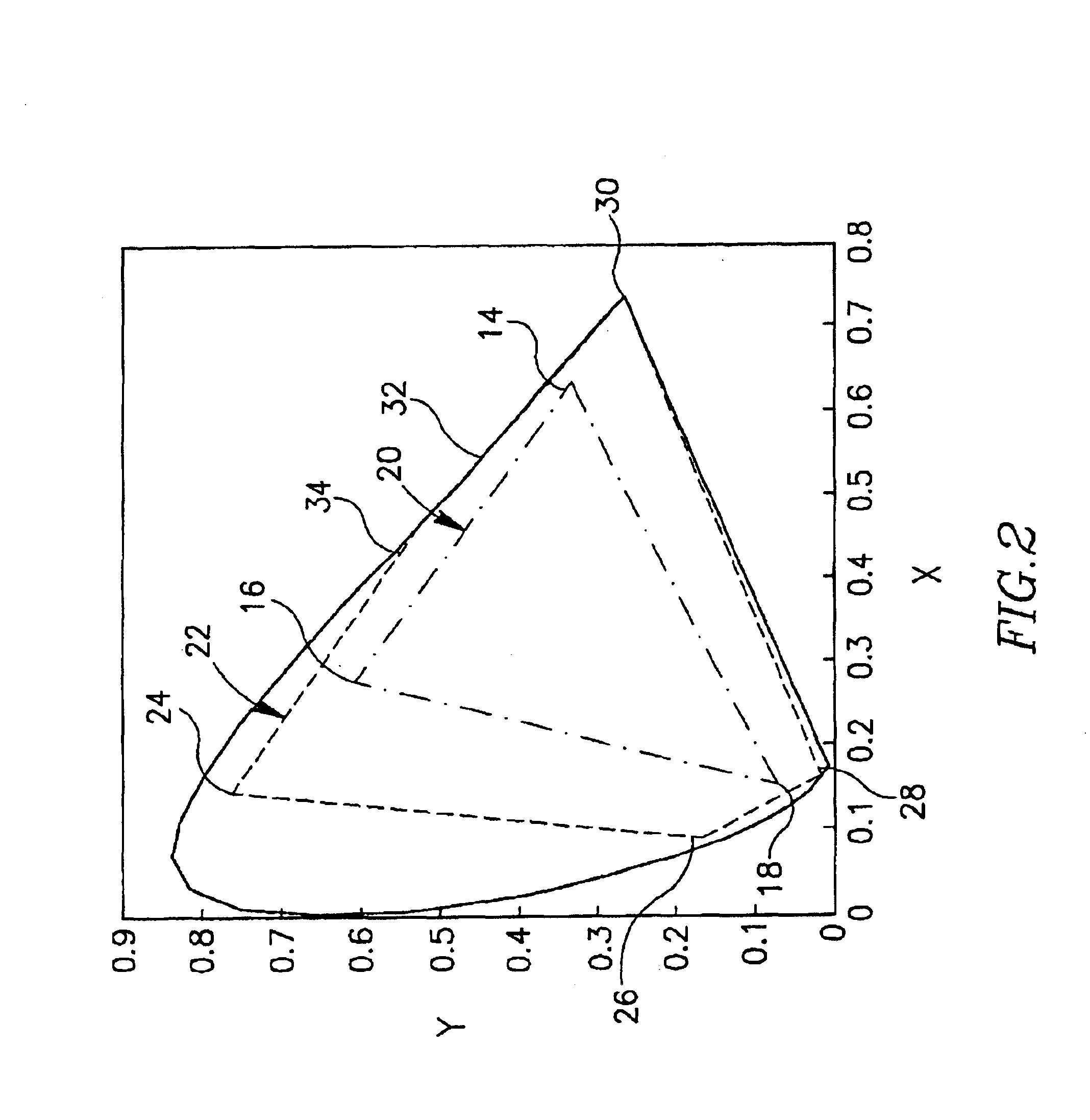Device, system and method for electronic true color display
a technology of electronic true color and display device, applied in the field of electronic true color display device, system and method, can solve the problems of not being able to produce physical devices, certain colors cannot be adequately represented mathematically, and the spectrum of colors still falls short of the complete spectrum of colors which are visible, etc., to achieve the effect of expanding the color spectrum
- Summary
- Abstract
- Description
- Claims
- Application Information
AI Technical Summary
Benefits of technology
Problems solved by technology
Method used
Image
Examples
Embodiment Construction
The present invention is of a device, system and a method for displaying an expanded spectrum of colors. The present invention is suitable for various types of electronic display devices, such as televisions and monitor devices (“monitors”) for computational devices, for example. The present invention operates by using more than three primary colors. As previously described, the term “primary color” specifically does not include light from a white or polychromatic light source after only being passed through a neutral filter. Thus, unlike background art systems and devices, the present invention is not limited to combinations of colors which are produced from only three primary colors, such as red, green and blue for example.
According to preferred embodiments of the present invention, light from six primary colors is used, although of course any number of primary colors is operative with the present invention, as long as at least four such primary colors are included. The use of six...
PUM
| Property | Measurement | Unit |
|---|---|---|
| wavelengths | aaaaa | aaaaa |
| rotation frequencies | aaaaa | aaaaa |
| time | aaaaa | aaaaa |
Abstract
Description
Claims
Application Information
 Login to View More
Login to View More - R&D
- Intellectual Property
- Life Sciences
- Materials
- Tech Scout
- Unparalleled Data Quality
- Higher Quality Content
- 60% Fewer Hallucinations
Browse by: Latest US Patents, China's latest patents, Technical Efficacy Thesaurus, Application Domain, Technology Topic, Popular Technical Reports.
© 2025 PatSnap. All rights reserved.Legal|Privacy policy|Modern Slavery Act Transparency Statement|Sitemap|About US| Contact US: help@patsnap.com



